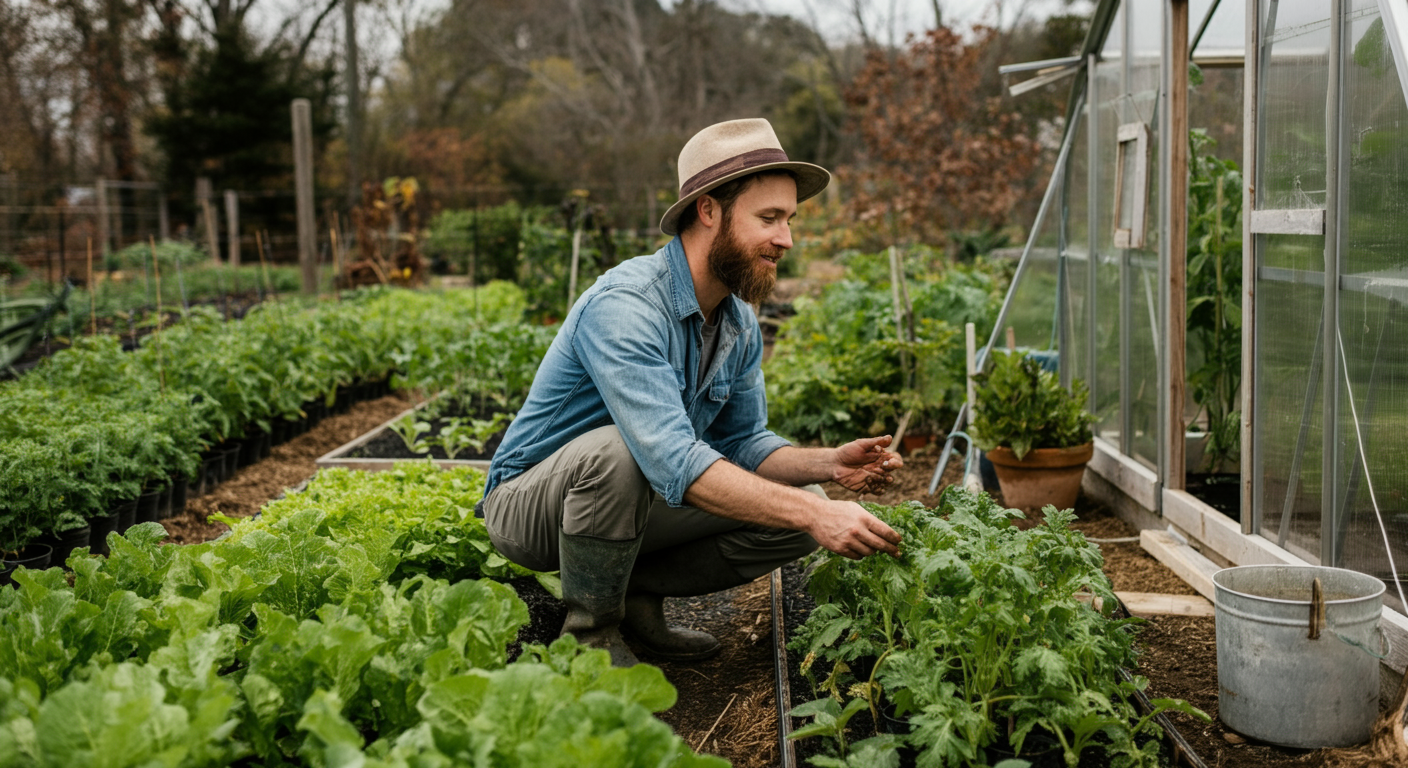How to Set Up a Greenhouse for Year-Round Farming
A greenhouse can be a sanctuary for plants—and for you. Whether you’re looking to extend your growing season, protect delicate crops, or simply enjoy fresh produce all year, a well-designed greenhouse makes it possible. Setting one up requires thoughtful planning, but the process doesn’t have to be overwhelming. Here’s a gentle, step-by-step guide to creating a greenhouse that nurtures growth in every season.

1. Choose the Right Location
A greenhouse thrives in a spot that balances sunlight and shelter. Look for:
- Maximum sunlight exposure – Ideally, place it where it will receive at least 6 hours of direct sunlight daily, preferably facing south.
- Wind protection – Avoid open, windy areas, or consider adding a windbreak like a fence or shrubs.
- Good drainage – Ensure water doesn’t pool around the structure. A slightly elevated or graded site helps.
2. Select a Greenhouse Design
Greenhouses come in various styles, from simple hoop houses to sturdy glass structures. Consider:
- Hoop houses – Affordable and easy to assemble, great for beginners.
- Gable-style greenhouses – More space and better airflow, ideal for year-round growing.
- Lean-to greenhouses – Attached to a house or shed, saving space and energy.
Choose materials based on durability and insulation—polycarbonate panels, for example, retain heat better than single-pane glass.
3. Ensure Proper Ventilation & Temperature Control
Plants need fresh air and stable temperatures. To maintain balance:
- Install vents or louvers – Automatic openers are helpful for regulating heat.
- Use shade cloth in summer – Prevents overheating during intense sunlight.
- Add a heater for winter – Electric, propane, or passive solar heaters keep frost at bay.
A small fan can also improve air circulation, reducing mold and disease risks.
4. Optimize Insulation
To keep warmth in during colder months:
- Double-layer plastic or use insulated panels – Traps heat more effectively.
- Seal gaps – Check doors and edges for drafts.
- Add thermal mass – Water barrels or stone pathways absorb heat during the day and release it at night.
5. Set Up Efficient Watering Systems
Consistent moisture is key. Options include:
- Drip irrigation – Delivers water directly to roots, reducing waste.
- Soaker hoses – Affordable and easy to install.
- Hand-watering – Works for small setups but requires daily attention.
A rain barrel can also help with sustainable water sourcing.
6. Choose the Right Plants for Year-Round Growth
Not all crops thrive in every season. Focus on:
- Cool-season crops (fall/winter) – Kale, spinach, lettuce, and herbs like parsley.
- Warm-season crops (spring/summer) – Tomatoes, peppers, cucumbers, and beans.
Rotate plants to keep soil healthy and prevent nutrient depletion.
7. Monitor & Adjust as Needed
A greenhouse is a dynamic environment. Regularly check:
- Temperature and humidity levels – A simple thermometer/hygrometer helps.
- Pest activity – Isolate affected plants early to prevent spread.
- Soil health – Test pH and replenish nutrients with compost or organic fertilizers.
Final Thoughts
Creating a year-round greenhouse is a gradual process—one that rewards patience and observation. Start small, learn as you go, and let the rhythm of the seasons guide you. Over time, your greenhouse will become a peaceful retreat where growth never stops, no matter the weather outside.
Would you like recommendations for specific greenhouse kits or plant varieties? Feel free to ask—I’m happy to help. 🌱